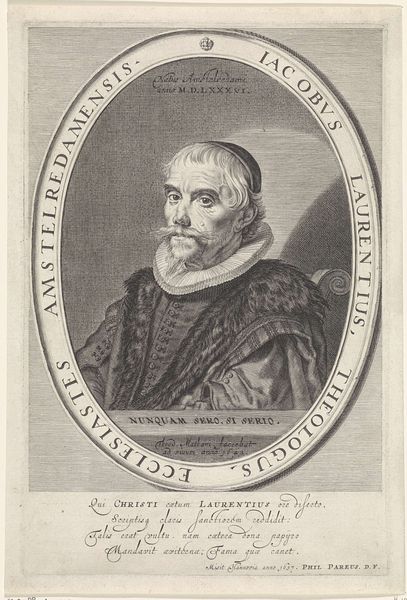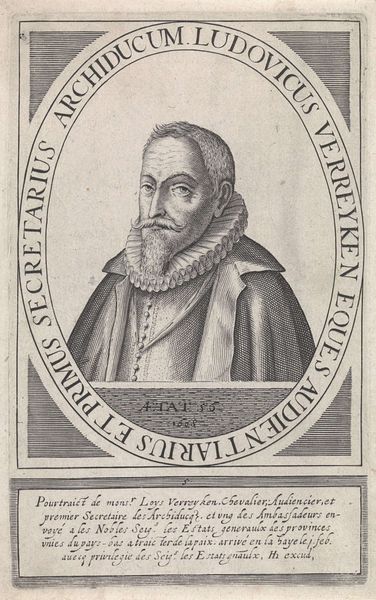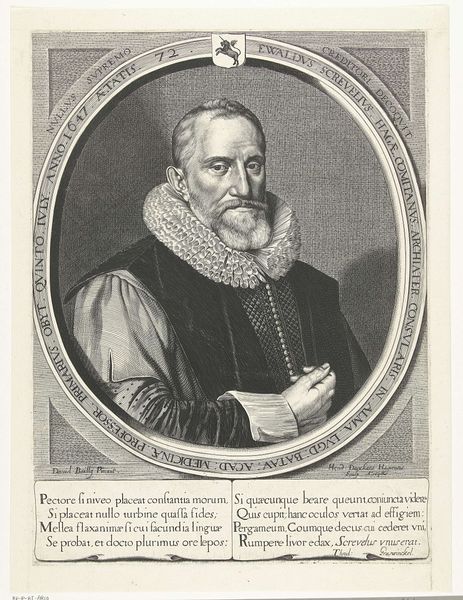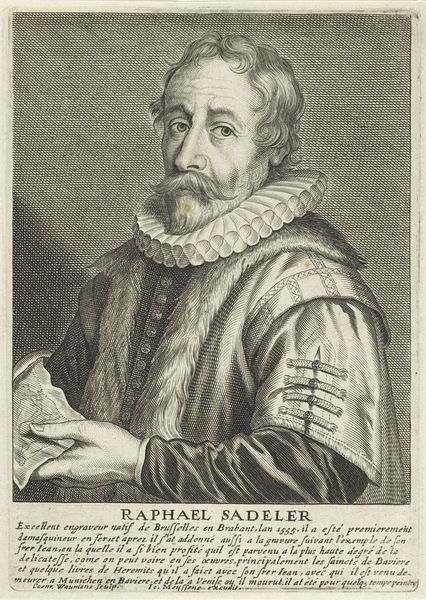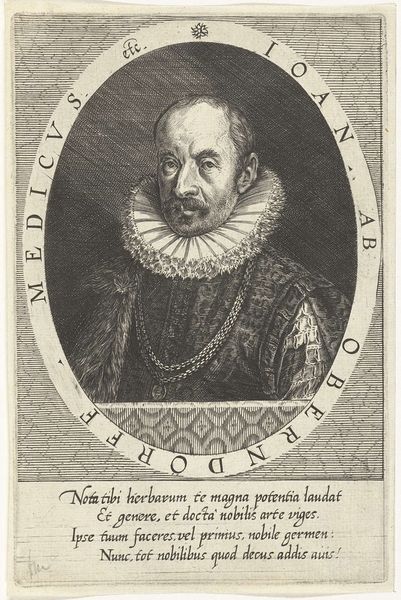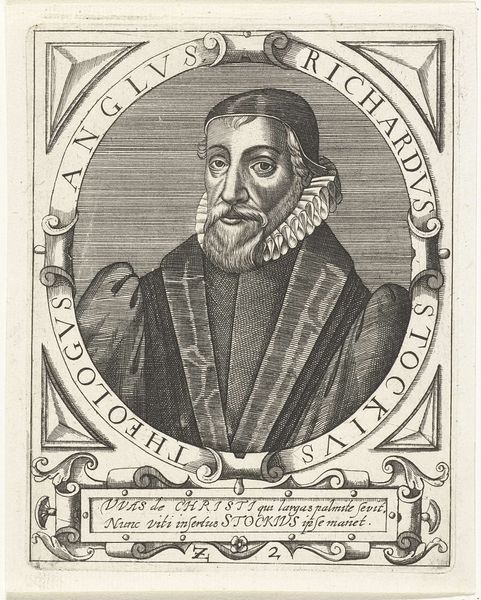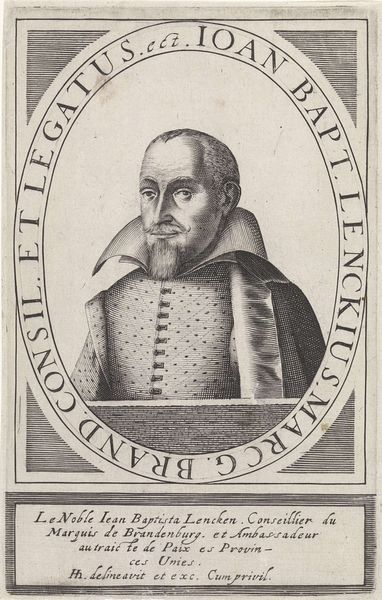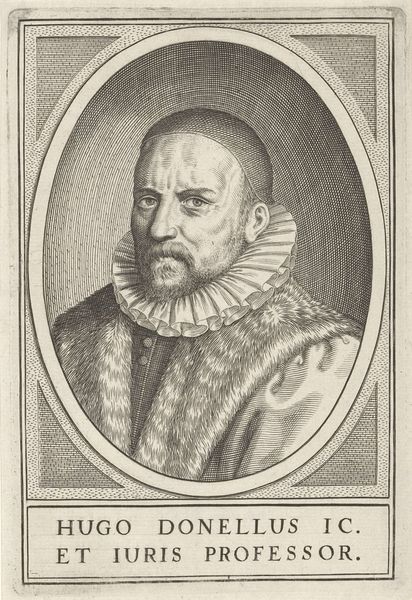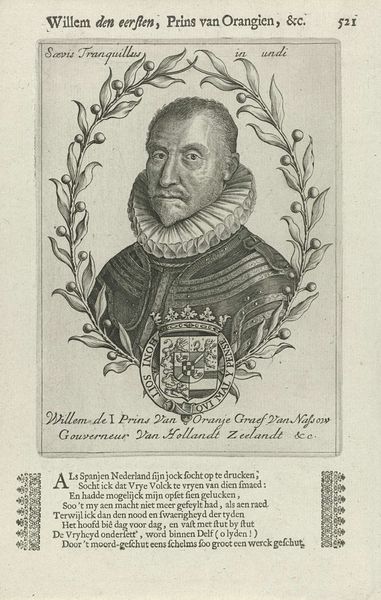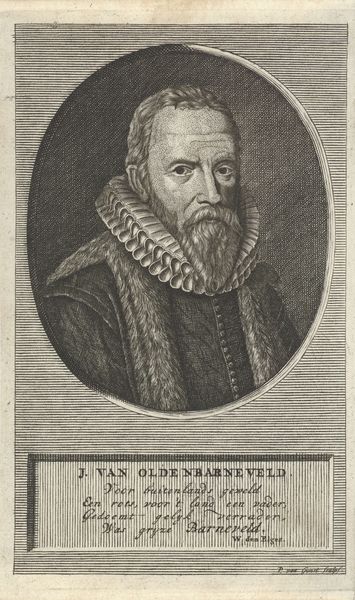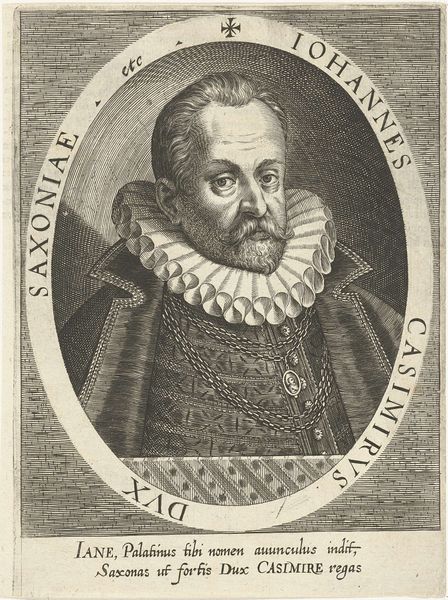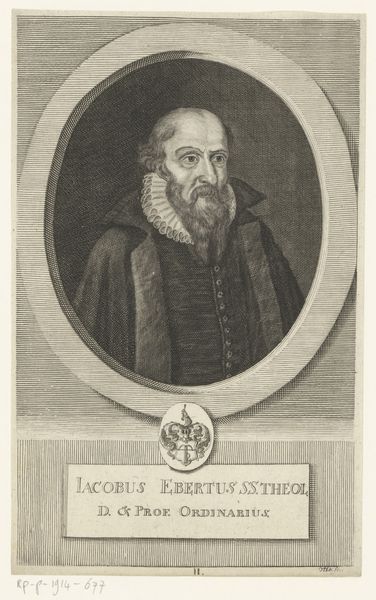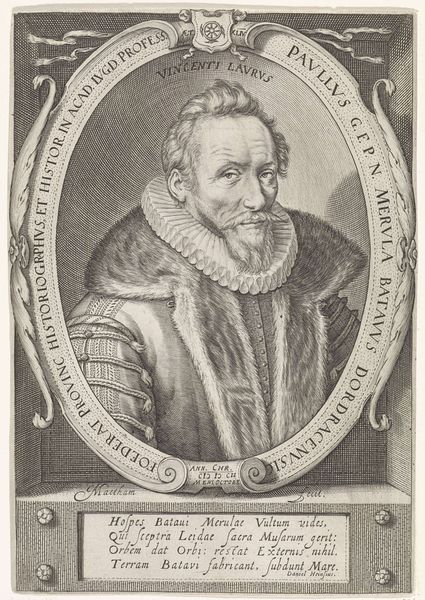
intaglio, paper, engraving
#
baroque
#
intaglio
#
old engraving style
#
paper
#
pencil drawing
#
engraving
Dimensions: height 251 mm, width 155 mm
Copyright: Rijks Museum: Open Domain
This portrait of Jacobus Laurentius was made in 1637 by an anonymous artist, using engraving. Look closely, and you'll see that the image isn't drawn, but rather incised into a metal plate. The artist would have used a tool called a burin to carve lines into the metal, creating grooves that hold ink. Then, the plate is pressed onto paper, transferring the image. Engraving was a highly skilled craft, demanding precision and control. The varying thickness and density of the lines create a sense of depth and texture, bringing Laurentius's face and clothing to life. The lettering is also skillfully rendered, demonstrating the engraver's mastery. But engraving was also a reproductive technology. Prints like this one allowed images to be widely disseminated, contributing to the growth of visual culture and the spread of knowledge. It's a great example of how a traditional craft could be harnessed to new social and economic ends. We can appreciate the technical skill involved, but also consider its role in a rapidly changing world.
Comments
No comments
Be the first to comment and join the conversation on the ultimate creative platform.
